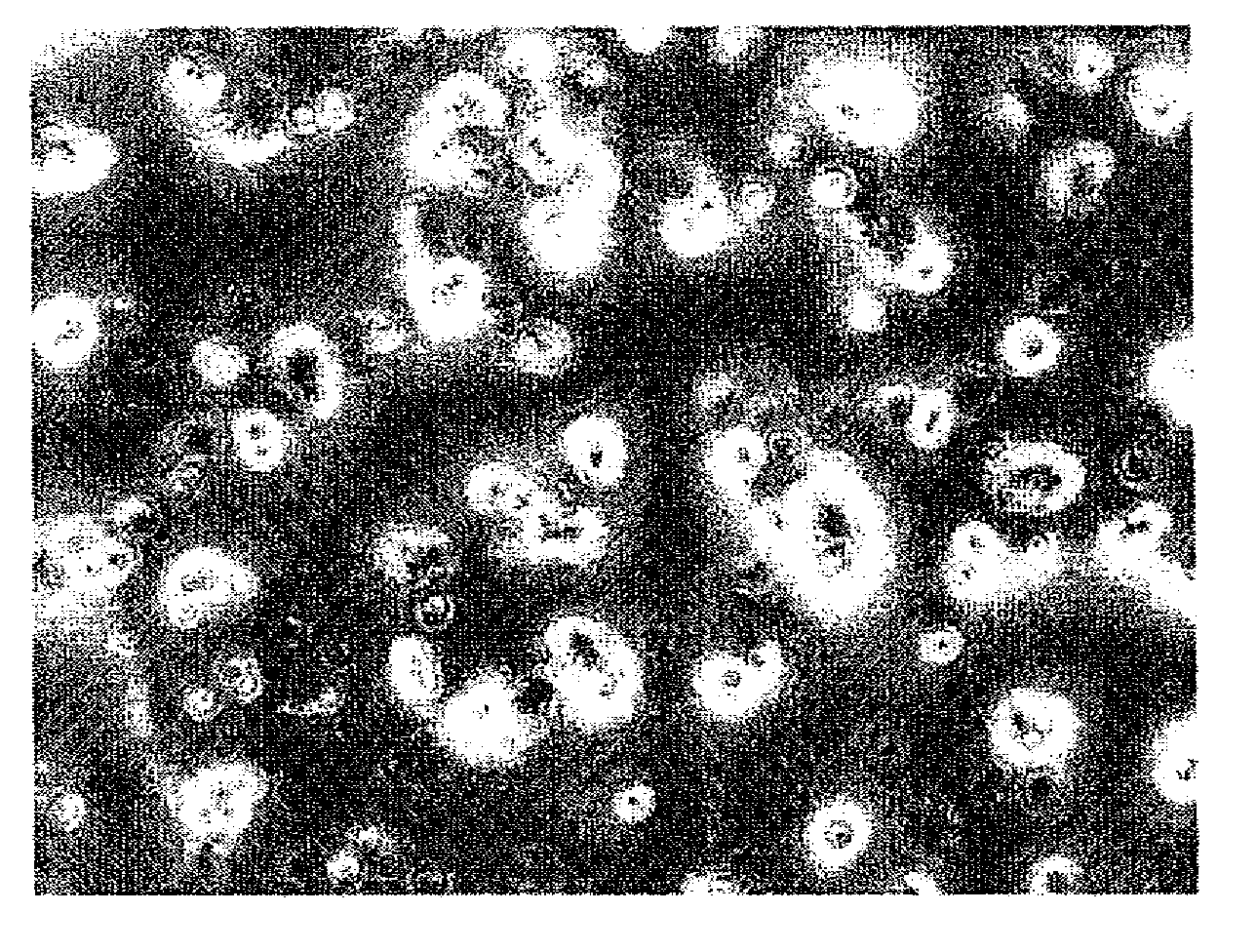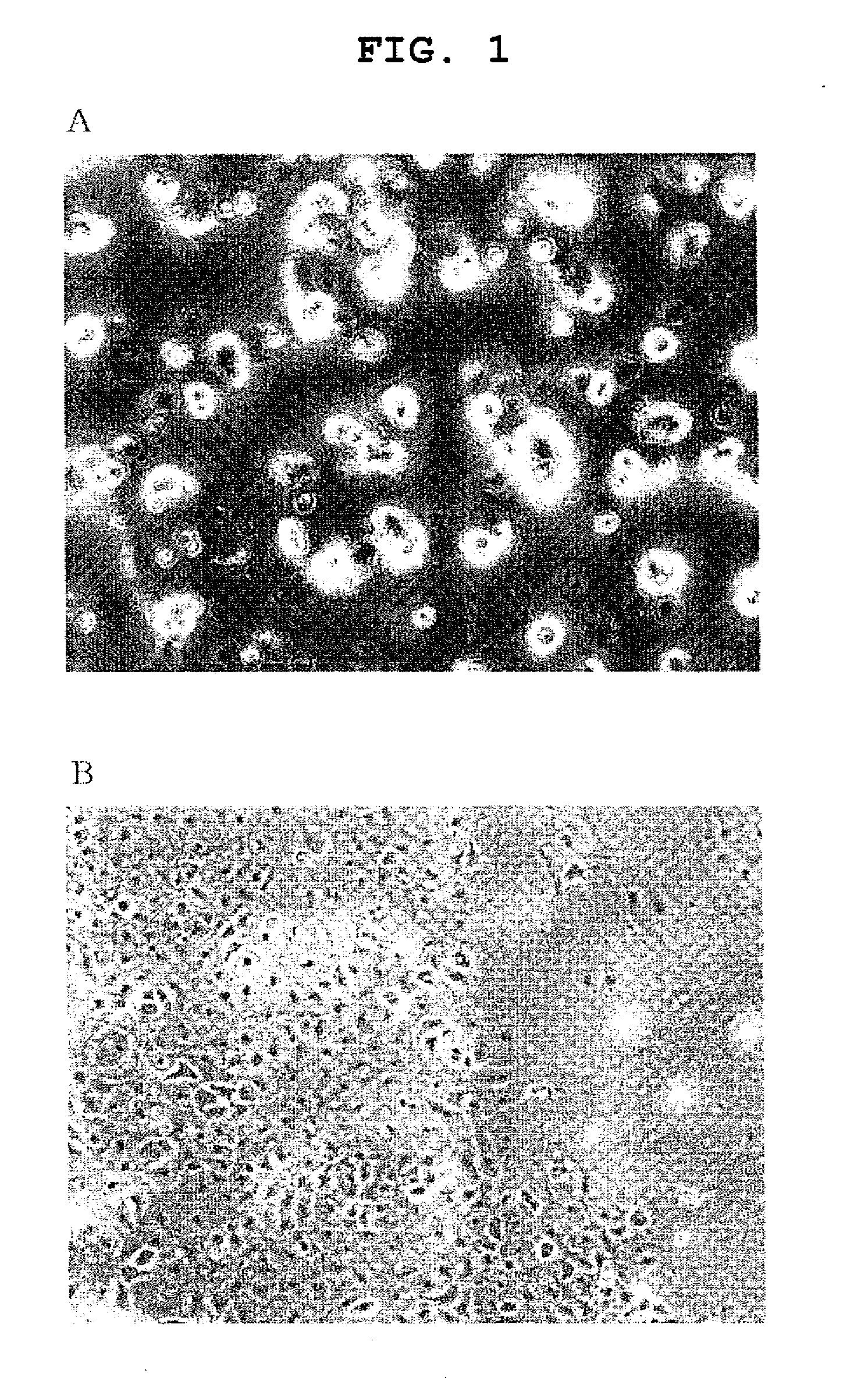Agent for promoting corneal endothelial cell adhesion
- Summary
- Abstract
- Description
- Claims
- Application Information
AI Technical Summary
Benefits of technology
Problems solved by technology
Method used
Image
Examples
example 1
Study of Influence of ROCK Inhibitor on Culture of Rabbit Corneal Endothelial Cell
[0065]From a rabbit corneal tissue isolated immediately after euthanasia, Descemet's membrane with corneal endothelial cells attached thereto was separated. The Descemet's membrane was incubated together with Dispase II (1.2 U / ml, Roche Applied Science) under the conditions of 37° C., 5% CO2 for 45 min, and the corneal endothelial cells were mechanically separated by a pipetting operation. The separated corneal endothelial cells were centrifuged, the cells of a ROCK inhibitor(+) group were stirred in a medium for corneal endothelium added with Y-27632 (10 μM) and the cells of a ROCK inhibitor(−) group were stirred in a medium for corneal endothelium without addition of Y-27632, to the same concentration, and the cells were seeded on a 96 well plate at a density of about 2000 cells per well. As a medium for corneal endothelium, a culture medium (DMEM, Gibco Invitrogen) added with 1% fetal bovine serum a...
example 2
Study of Influence of Y-27632 on Culture of Monkey Corneal Endothelial Cell
[0067]From the corneal tissue isolated from Macaca fascicularis euthanized for other purpose, Descemet's membrane with corneal endothelial cells attached thereto was separated. For the ROCK inhibitor(+) group, the Descemet's membrane was placed in a medium for corneal endothelium added with Y-27632 (10 μM) and incubated under the conditions of 37° C., 5% CO2 for 10 min. For the ROCK inhibitor(−) group, the membrane was placed in a medium for corneal endothelium without addition of Y-27632 and incubated for 10 min under the same conditions. As the medium for corneal endothelium, the same cell culture medium as in Example 1 was used. The Descemet's membrane after the incubation was incubated together with Dispase II (1.2 U / ml, Roche Applied Science) under the conditions of 37° C., 5% CO2 for 45 min, and the corneal endothelial cells were mechanically separated by a pipetting operation. The separated corneal end...
example 3
Study of Influence of Y-27632 on Culture of Human Corneal Endothelial Cell
[0069]Of human corneal tissues obtained from the US eye bank, the central part (diameter 7 mm) had been used for corneal transplantation and the remaining surrounding corneal tissue was used. The Descemet's membrane with corneal endothelial cells adhered thereto was separated. For the ROCK inhibitor(+) group, the Descemet's membrane was placed in a medium for corneal endothelium added with Y-27632 (10 μM) and incubated under the conditions of 37° C., 5% CO2 for 10 min. For the ROCK inhibitor(−) group, the membrane was placed in a medium for corneal endothelium without addition of Y-27632 and incubated for 10 min under the same conditions. As the medium for corneal endothelium, the same culture medium as in Example 1 was used. The Descemet's membrane after the incubation was incubated together with Dispase II (1.2 U / ml, Roche Applied Science) under the conditions of 37° C., 5% CO2 for 45 min, and the corneal en...
PUM
| Property | Measurement | Unit |
|---|---|---|
| Adhesion strength | aaaaa | aaaaa |
Abstract
Description
Claims
Application Information
 Login to View More
Login to View More - R&D
- Intellectual Property
- Life Sciences
- Materials
- Tech Scout
- Unparalleled Data Quality
- Higher Quality Content
- 60% Fewer Hallucinations
Browse by: Latest US Patents, China's latest patents, Technical Efficacy Thesaurus, Application Domain, Technology Topic, Popular Technical Reports.
© 2025 PatSnap. All rights reserved.Legal|Privacy policy|Modern Slavery Act Transparency Statement|Sitemap|About US| Contact US: help@patsnap.com



